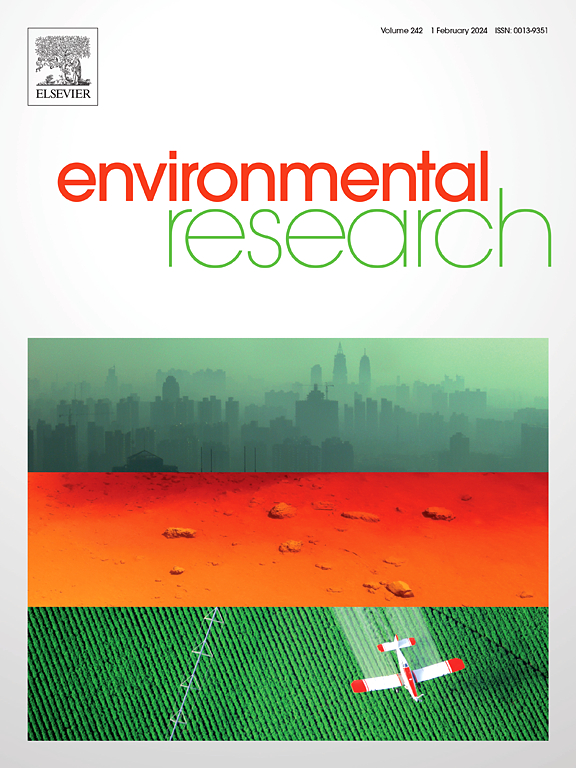Electrochemical degradation of toluene-2,4-diamine by graphene oxide-modified Ti/Sb-SnO2/α-PbO2/β-PbO2 anode: Performance and mechanism
IF 7.7
2区 环境科学与生态学
Q1 ENVIRONMENTAL SCIENCES
引用次数: 0
Abstract
The formidable toluene-2,4-diamine (TDA), a potential human carcinogenic pollutant, environmental challenge necessitates investigating an efficient technology and clarifying its removal mechanism. Accordingly, we prepared a graphene oxide-modified PbO2 anode (Ti/Sb-SnO2/α-PbO2/GO-β-PbO2) to degrade TDA using electrochemical oxidation technology given its high oxidation capacity and green feature. The Ti/Sb-SnO2/α-PbO2/GO-β-PbO2 attained 100 % TDA and 82.7 % COD removal efficiency after 3.0 h electrolysis for its high oxygen evolution overpotential (2.08 V vs.SCE), superior ⋅OH generation capacity, and hydrophobic surface (121.2°). The quenching experiments and EPR tests all confirmed the vital role of both ⋅OH and SO4·-, resulting in the oxidation of the benzene ring and amino group. Moreover, the (Ti/Sb-SnO2/α-PbO2/GO-β-PbO2 also presented an improved stability with the accelerated lifetime prolonged by about 50.8 %. Therefore, this work provides a toolbox for treating TDA wastewater and a good reference for fabricating PbO2 anode via a facile yet effective method.
氧化石墨烯修饰Ti/Sb-SnO2/α-PbO2/β-PbO2阳极电化学降解甲苯-2,4-二胺:性能与机理
甲苯-2,4-二胺(TDA)是一种潜在的人类致癌物,对环境构成挑战,需要研究一种有效的技术并阐明其去除机理。因此,我们制备了氧化石墨烯修饰的PbO2阳极(Ti/Sb-SnO2/α-PbO2/GO-β-PbO2),利用电化学氧化技术降解TDA,具有高氧化能力和绿色特性。Ti/Sb-SnO2/α-PbO2/GO-β-PbO2具有较高的析氧过电位(2.08 V vs.SCE)、超强的⋅OH生成能力和121.2°的疏水表面,经3.0 h电解后可达到100%的TDA和82.7%的COD去除率。猝灭实验和EPR实验均证实了⋅OH和SO4·-对苯环和氨基氧化的重要作用。此外,(Ti/Sb-SnO2/α-PbO2/GO-β-PbO2也表现出更好的稳定性,加速寿命延长约50.8%。因此,本研究为TDA废水的处理提供了一个工具箱,并为通过一种简便而有效的方法制备PbO2阳极提供了良好的参考。
本文章由计算机程序翻译,如有差异,请以英文原文为准。
求助全文
约1分钟内获得全文
求助全文
来源期刊

Environmental Research
环境科学-公共卫生、环境卫生与职业卫生
CiteScore
12.60
自引率
8.40%
发文量
2480
审稿时长
4.7 months
期刊介绍:
The Environmental Research journal presents a broad range of interdisciplinary research, focused on addressing worldwide environmental concerns and featuring innovative findings. Our publication strives to explore relevant anthropogenic issues across various environmental sectors, showcasing practical applications in real-life settings.
 求助内容:
求助内容: 应助结果提醒方式:
应助结果提醒方式:


